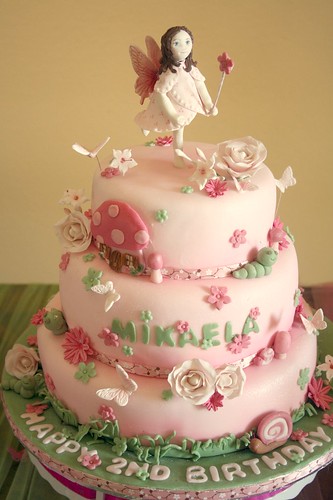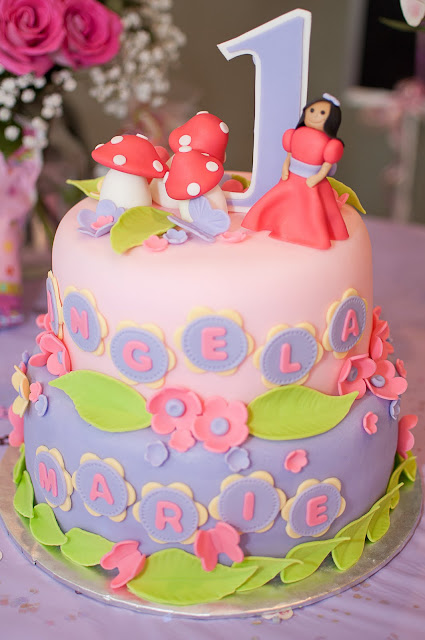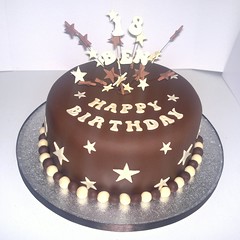| Source:- Google.com.pk |
In Sweden as well as in Finland, the Napoleonbakelse (Napoleon pastry) is a mille-feuille filled with whipped cream, custard, and jam. The top of the pastry is glazed with icing and currant jelly. In Denmark and Norway, it is simply called Napoleonskake.In Belgium and the Netherlands the tompouce or tompoes is the equivalent pastry. Several variations exist in Belgium, but in the Netherlands it has achieved an almost iconic status and the market allows preciously little variation in form, size, ingredients and colour (always two layers of pastry, nearly always pink glazing, but orange around national festivities). The cartoon character Tom Puss by Marten Toonder is named after the tompouce.Tompouce on the Queen's day in Netherlands In Greece, the pastry is called Μιλφέιγ, which is the transcription of the word mille-feuille using Greek letters. The filling between the layers is cream whereas Chantilly cream is used at the top of the pastry.In the Spanish milhojas, the puff pastry is thin and crunchy. They are often far deeper than solely of three layers of the pastry, and reach up to .5 feet (0.15 m) tall.In Chile milhojas, various layers of puff pastry are layered with dulce de leche and confectioner sugar on top.In Morocco, Algeria and Tunisia, it is consumed regularly. It is called mille-feuille also. In northern Morocco they call it Milfa which is a combination/portmanteau of the words mille and feuille.A layer cake (US English) or sandwich cake (UK English), also called a sandwich in UK English, is a cake consisting of multiple stacked sheets of cake, held together by frosting or another type of filling, such as jam or other preserves. Most cake recipes can be made into layer cakes; butter cakes and sponge cakes are common choices. Frequently, the cake is covered with icing, but sometimes, the sides are left undecorated, so that the filling and the number of layers are visible.Popular flavor combinations include the German chocolate cake, red velvet cake, Black Forest cake, and carrot cake with cream cheese icing. Many wedding cakes are decorated layer cakes.In the mid-19th century, modern cakes were first described in English. Maria Parloa's Appledore Cook Book, published in Boston in 1872, contained one of the first layer cake recipes. Another early recipe for layer cake was published in Cassell's New Universal Cookery Book, published in London in 1894.An older form of layer cake is common in southern and eastern Europe. In Ukraine and Russia, people still make these cakes in the old traditional way. The cake batter is baked in a frying pan in thin layers, about a centimeter thick in the finished stack. These layers are then covered with a thin layer of cream and/or jam and stacked 7 or 8 layers high. This stack, which is the same height as the typical Western layer cake, is then frosted so that the structure is not visible. At first glance, these cakes look much like a German konditorei style cake such as the Black Forest cake.Layer cakes always serve multiple people, so they are larger than cupcakes, petit fours, or other individual pastries. A common layer cake size, which is baked in nine-inch round cake pans, typically serves about 16 people.Unlike the Vietnamese Bánh da lợn or Swiss rolls, layer cake is assembled from several separate pieces of cake. A sheet cake can become a layer cake if it is cut into pieces and reassembled with frosting or other filling to form layers.
Birthday Cakes Online Delivery Birthday Cake Images For Girls Clip Art Pictures Pics With Name Ideas With Candles Love Designs
Birthday Cakes Online Delivery Birthday Cake Images For Girls Clip Art Pictures Pics With Name Ideas With Candles Love Designs
Birthday Cakes Online Delivery Birthday Cake Images For Girls Clip Art Pictures Pics With Name Ideas With Candles Love Designs Birthday Cakes Online Delivery Birthday Cake Images For Girls Clip Art Pictures Pics With Name Ideas With Candles Love Designs Birthday Cakes Online Delivery Birthday Cake Images For Girls Clip Art Pictures Pics With Name Ideas With Candles Love Designs Birthday Cakes Online Delivery Birthday Cake Images For Girls Clip Art Pictures Pics With Name Ideas With Candles Love Designs Birthday Cakes Online Delivery Birthday Cake Images For Girls Clip Art Pictures Pics With Name Ideas With Candles Love Designs Birthday Cakes Online Delivery Birthday Cake Images For Girls Clip Art Pictures Pics With Name Ideas With Candles Love Designs Birthday Cakes Online Delivery Birthday Cake Images For Girls Clip Art Pictures Pics With Name Ideas With Candles Love Designs Birthday Cakes Online Delivery Birthday Cake Images For Girls Clip Art Pictures Pics With Name Ideas With Candles Love Designs Birthday Cakes Online Delivery Birthday Cake Images For Girls Clip Art Pictures Pics With Name Ideas With Candles Love Designs
Birthday Cakes Online Delivery Birthday Cake Images For Girls Clip Art Pictures Pics With Name Ideas With Candles Love Designs
Birthday Cakes Online Delivery Birthday Cake Images For Girls Clip Art Pictures Pics With Name Ideas With Candles Love Designs Birthday Cakes Online Delivery Birthday Cake Images For Girls Clip Art Pictures Pics With Name Ideas With Candles Love Designs Birthday Cakes Online Delivery Birthday Cake Images For Girls Clip Art Pictures Pics With Name Ideas With Candles Love Designs Birthday Cakes Online Delivery Birthday Cake Images For Girls Clip Art Pictures Pics With Name Ideas With Candles Love Designs Birthday Cakes Online Delivery Birthday Cake Images For Girls Clip Art Pictures Pics With Name Ideas With Candles Love Designs Birthday Cakes Online Delivery Birthday Cake Images For Girls Clip Art Pictures Pics With Name Ideas With Candles Love Designs Birthday Cakes Online Delivery Birthday Cake Images For Girls Clip Art Pictures Pics With Name Ideas With Candles Love Designs Birthday Cakes Online Delivery Birthday Cake Images For Girls Clip Art Pictures Pics With Name Ideas With Candles Love Designs Birthday Cakes Online Delivery Birthday Cake Images For Girls Clip Art Pictures Pics With Name Ideas With Candles Love Designs








